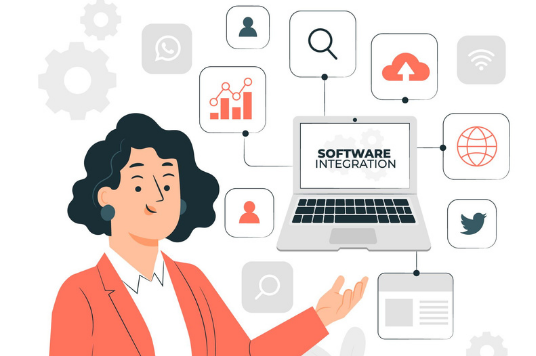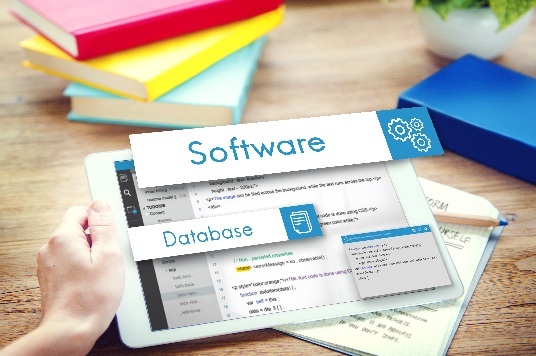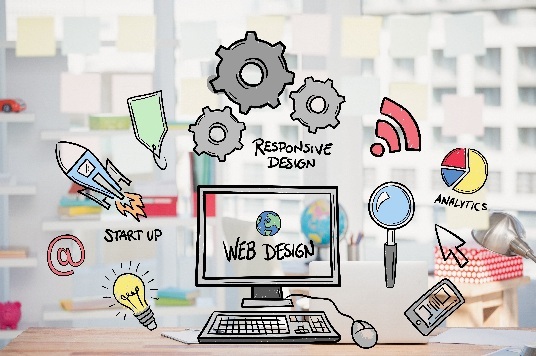Every software product is unique on its own. Each one has a different scope, timeline, technical specification, business requirements, target audience, costs, system integrations, complexity levels, goals, offerings, etc.
You cannot deny that none of the off-the-shelf software can fulfill all your business needs. Your business needs some system integrations with them to satisfy your customer needs.
Whether you own a startup, product company, small-medium enterprise, or a big MNC, you all have different visions for building software.
Every enterprise needs a supercharging digital product that serves their requirements with minimum cost and time. Some want to build software to streamline their internal process, some want to make a unique digital product, and some have different business requirements.
But, one thing that is common among them is the desire to shift their interest toward developing customized solutions.
One of the major challenges CTOs often face while custom software development is how long it will take to complete the software product and the cost incurred. Understanding and estimating cost and duration is vital as it helps you in making strategic business decisions.
Moreover, when scaling your digital product CTOs should focus on future business growth, incorporating the latest technologies, and upgrading product reliability without affecting current software performance.
CTOs often miscalculate the cost while planning for custom software maintenance in their initial budget calculations.
And here this article will help you.
It provides you with a quick way to estimate your custom software maintenance cost and the need for software integration.
We will take you a ride through the write-up to help you make smart decisions about scaling your application or software.
What Is Custom Software Maintenance?
Custom software maintenance is proactive software development that allows you to add more features and functionalities. The last phase of the software development life cycle helps identify and eliminate your bugs without deteriorating the software or diminishing the user experience.
Software maintenance is complex and challenging for the maintenance team. It covers maintenance services, including small changes to functionality, bug fixing, and optimization for identifying performance problems.
Software maintenance can thus be classified as:
-
Corrective maintenance: It’s all about solving defects, glitches, and loopholes in the software.
-
Perfective maintenance: It’s all about refining, eliminating, or enhancing pre-existing features.
-
Adaptive maintenance: It is about ensuring your software doesn’t become obsolete.
-
Preventive maintenance: It includes alterations made to reduce the deterioration of your software.
Defining Software Integration
Software integration connects two different independent software to solve a problem for a specific purpose. Creating integrated softwares provides you with greater functionality and high performance across all the separate components.
Software integration is a critical process that requires an in-depth understanding of your industry and the trending technologies. It facilitates fast and effective decision-making.
According to the report, the System Integration Market size is worth around USD 330 billion in 2020 and is set to grow at 8.5% CAGR between 2021 and 2027.
Moreover, enterprises that use multiple databases or various applications will integrate their software to have uniform metrics.
Software Integration Is Equally Important For Your Product. Here's Why?
80% of business operations leaders, including those from service delivery, manufacturing, and supply chain, say data integration is critical to their success.
The most prominent benefit is simplifying complex business processes by unifying them with system integrations. Here listed the reasons why you should build software integrations for your product.
Simplify The Complexity Of Systems
Today’s digital environment requires efficient ways to integrate your products efficiently into their workflows. It is difficult to find solutions from multiple vendors for a single area of operations. Managing resources and business workflows requires an immense amount of time and money. Software integration enables customers to unify all the technologies seamlessly.
Accelerate The Product adoption Among Users
Introducing new products into an existing system always comes with challenges, even when you have a far superior product. Using robust software integrations simplifies the onboarding of your products into enterprises already using such tools.
It Minimizes Customer Churn
Customers expect easy-to-use solutions in the modern age. System integrations allow businesses to unify their solutions with their preferred configuration management tool.
Regardless of the industry, your business will benefit from adopting a customer-centric approach to all operations. With integrations, you can offer a great customer experience that encourages people to buy more and return for future purchases with integrations.

It Merges Diverse Systems
Businesses that utilize multiple diverse systems need software integration to manage their inventory and large data reports. This will help them to track their inventory and stock levels in real-time. Also, they can easily maintain maximum quantities of merchandise in their store.
Higher Business Agility
With real-time software integration and data exchange, you can ensure consistent and strategic decision-making while exploring new business opportunities.
Reduce Development Time And Cost Optimization
While software integration, you can make a smart strategic decision and reduce the efforts and resources required to redesign existing software.
Build Secure And Efficient B2B Relationships
You can build secure, healthy, and long-term B2B relationships and faster deployment of business processes while integrating communication channels seamlessly.
6 Steps Of Software Integration Process
Once a software data integration method is selected, management teams can follow these best practices to connect disjointed systems effectively.
According to research, marketing leaders are 1.3X as likely as mainstream marketers to predict that their data and analytics strategy defines how they integrate data and related technologies.
1. Collect Requirements, And Specifications First
The first step is to determine and document the diverse systems with different specifications they plan to integrate. This is all about understanding what the sole application is used for and how it is used.
You must ask the questions to gain a better understanding of their software.
- What is the aim of the software subsystem?
- How do they perform specific actions?
- What do they exactly need from users to function efficiently?
- What types of data does the system collect?
2. Analyze The Information
After collecting all the requirements, the team must analyze them and determine if we can perform application integration. If it is, you can now assess current processes and identify for any needs regarding their software solutions. This will help you improve the existing system and can effectively connect them.
3. Develop Architecture
The team will now create a blueprint for the integration at this stage. The integration plan must contain a list of the tools that will be used. Moreover, the visual representation of the plan will make it easier for executives to view and share with stakeholders. The diagram will show you how the systems will link to other applications.
4. Design The Software Integration System
Now, you can create the software integration system based on the blueprint. Your team should be smart enough to run regular tests to ensure it is operating when establishing the system. This procedure will take a big amount of time as the developers need to pay attention to the system architecture and fix them immediately before moving further.
5. Initiate the Integration Process
After a successful testing process, you can now start utilizing it. You can now download the software and set it up properly for the integration process.
6. Evaluate System Performance Timely
Hiring the best development team helps you evaluate the system's performance and check if it is running well or not. It will ensure that you have eliminated all discrepancies and incompetence.
Benefit Of Software Integrations With Modern Businesses
Here we have listed some of the major benefits of software integration that businesses can achieve to accelerate their business growth.
1. Ensures Enhanced Interoperability, Flexibility, & Scalability
With software integration onboard into your development process, you will improve interoperability. Your current information systems, devices, and applications will collectively work with other systems without restrictions.
The Healthcare industry is one of the verticals to adopt interoperable software solutions to enable clinical information to move digitally across different systems safely, timely, and efficiently.
2. Facilitates Modernization of Traditional Systems With New-Age Apps
You can achieve legacy system modernization by integrating the latest software features and functionalities with existing business systems. The companies looking for modernizing their legacy systems either perform a complete transformation of their current systems or integrate their systems with modern applications. In both ways, software integration tools ensure smooth, secure, and seamless data migration practices to modernize your legacy systems effectively.
3. Accelerate Multi-Functionality
Suppose if off-the-shelf software doesn’t allow you to permit a particular set of tasks, you can’t go ahead with the development process. With software integrations, you can achieve increased multi-functionality within an existing product. Also, it allows you to get the most out of your solution without settling for something subpar.
4. Faster Automation & Reduces Human Error
The software automation process creates a friendly software ecosystem where you can automate your workflows. It will eliminate your manual and repetitive tasks with little human error.
By automating repetitive business processes and workflows, your employees are free from additional workloads and can now focus on their core tasks. Software integration helps you automate almost everything from personal productivity to lead management to customer communication.
5. Ensures Faster And Better Data-driven Decisions
By implementing software integrations, you can have all your data in one place, and you can spend your crucial time analyzing this data and making high-level business decisions. You can create a single dashboard with insights and customer data you need together to compare and identify trends.
6. Increases Team Efficiency
What if you get a chance to work with a unified system accessing various tools instead of working with multiple systems with duplicate data entries. A robust software integration system permits your team to spend resources on valued tasks rather than simple tasks like data mining.
Software integration reduces the chances of human error from no to a minimum in exporting, importing, and copying data, providing accurate and precise information to run your business.
7. Upgrade Your System Security
Ensuring the security of multiple systems or relying on solution providers creates additional risks for businesses. Software integrated systems own the security tools required to control user access and maintain customer and company data security and integrity.
8. Provide You With Real-time Data
Storing your data in multiple systems requires a myriad of resources and an enormous amount of time reviewing your data. With system integration, your data can be easily transferred from third-party applications to your central system in real-time. Software integration helps your team understand all aspects of your company in a better way and make fast and intelligent decisions.
Estimating Custom Software Maintenance And Integration Costs
Every piece of software requires timely and proper maintenance. The more complex your software will be, the more maintenance it will need to ensure continuous and proper usage.
Estimating software maintenance costs is a challenging and tedious task as it depends on numerous factors and components that need to be considered. Few expenses you should consider when making a plan for costs estimation of software maintenance:
1. Migration Cost
Your custom software/application needs version updates/migration to new technology to satisfy the changing marketing trends.
This cost comes under maintenance cost. Migration means rewriting most parts of your code to adapt it to the new technology that you choose.
You can easily migrate your application/software from Angular to React, from Native to Flutter (or React Native), or from javascript to python.
Or even you can upgrade the version of the technology on which the product is built. For example, you can upgrade from drupal 7 to drupal 9 to get additional features and functionality.
The cost will all depend on the content and design of the website.
The Drupal websites would cost you between $15,000 to $85,000. The hourly rate for Drupal migration/development varies on the developer’s experience level. However, a quality Drupal developer will cost an average of $65 to $150 per hour.
2. Adding New Feature/Functionality Cost
Adding new features or functionality with the changing software market and customer demands will add value to your software product.
So, If you want to add a new feature or functionality, you will need at least one developer.
Estimating this cost is relatively easy. Basically, you need to divide the salary of your developer by the hour of work.
Example:
Developer salary = $136,000/year = $11,333/month = $70/hour
You need to sum up the number of hours your developer worked on the feature. Consider all the time and effort spent planning, daily, and review meetings.
Here’s a quick example that showcases you the time and effort for adding a feature:
- 1 planned meeting will take around 2 hours
- Regular meetings will take time = 15 min x 10 = 150 min = + 2 hours and a half
- Consider 5 hours of work from one developer per day focused on the feature = 5 x 10 = 50 hours
- Time required by developers for code = 5 hours
- Time required by developers for reviewing the code = 2 hours
It takes you around 61.5 hours of work done with $4,305 rupees.

3. Bug Fixing Cost
Resolving the bugs, loopholes, or any glitch in the code also comes under software maintenance costs. It has to be encountered fast. You can estimate the cost of bug fixing with an example.
Suppose your developer's hourly rate is $50. He found a bug in your code and estimates it will take them 2 hours to fix it. If there are ten bugs per month, fixing the bugs will cost around $1000 monthly.
Let’s check another one.
If you need some changes in the user interface after release and your designer is asking for $30, then it will take a week to create the new design. It will take around 8 hours per day X $30 X 7 days = $1680 is the overall bug fixing cost. But for the rest, you also require some developers to develop the changes and upgrade the app.
This is how we can calculate bug fixing costs.
4. Hosting Costs
When it comes to hosting a heavy load application, it is very important to take into account and accurately calculate such costs as the pricing of the hosting service where the application data will be stored. It will cost you around $70 per month to $320 per month. The number of active users, storage needs, and business growth will determine the price.
The range will be between $5 to $240 per month depending on how much heavy lifting your software requires.
5. Software Integration Costs
Another cost considered under custom software maintenance is the cost involved in system integration. You will certainly find many software products that can work independently. Still, some need software integrations either with third-party applications, APIs, or even integrations with the existing enterprise legacy apps.
Integrating with third-party apps or APIs will not cost you as higher as it might cost when you want to integrate your custom software with an old legacy application. Also, some software requires to develop new APIs for smooth integration.
Software integration costs based on the size of enterprises:
- Small-sized enterprise- 2-6 weeks
- Medium-sized enterprise- 2-6 weeks
- Large-sized enterprise- 6-12 months
Overall, small-to-mid-sized businesses can expect the cost of software and services combined to range anywhere from $75,000 to $750,000. When it comes to the number and load of integrations, they can cost anywhere from $5,000 to $20,000 per year. Also, maintaining the application would cost you around 20% per year of the original development cost, i.e. $15,000.
Closing Thoughts
The changing software industry urges enterprises to shift their interest towards the development of customized solutions to keep up with the latest trends. Custom software solutions are in high demand due to their flexibility and scalability features. Switching to customized software solutions drive your enterprises towards achieving faster business growth and improved ROI. But with that, not only development cost you also have to address a significant amount of custom software maintenance cost.
Software integration helps you implement custom features and functionalities into your existing business systems and ensures smooth business operations and workflows. You need to think carefully and smartly about your software scalability when it comes to planning for business growth.
























